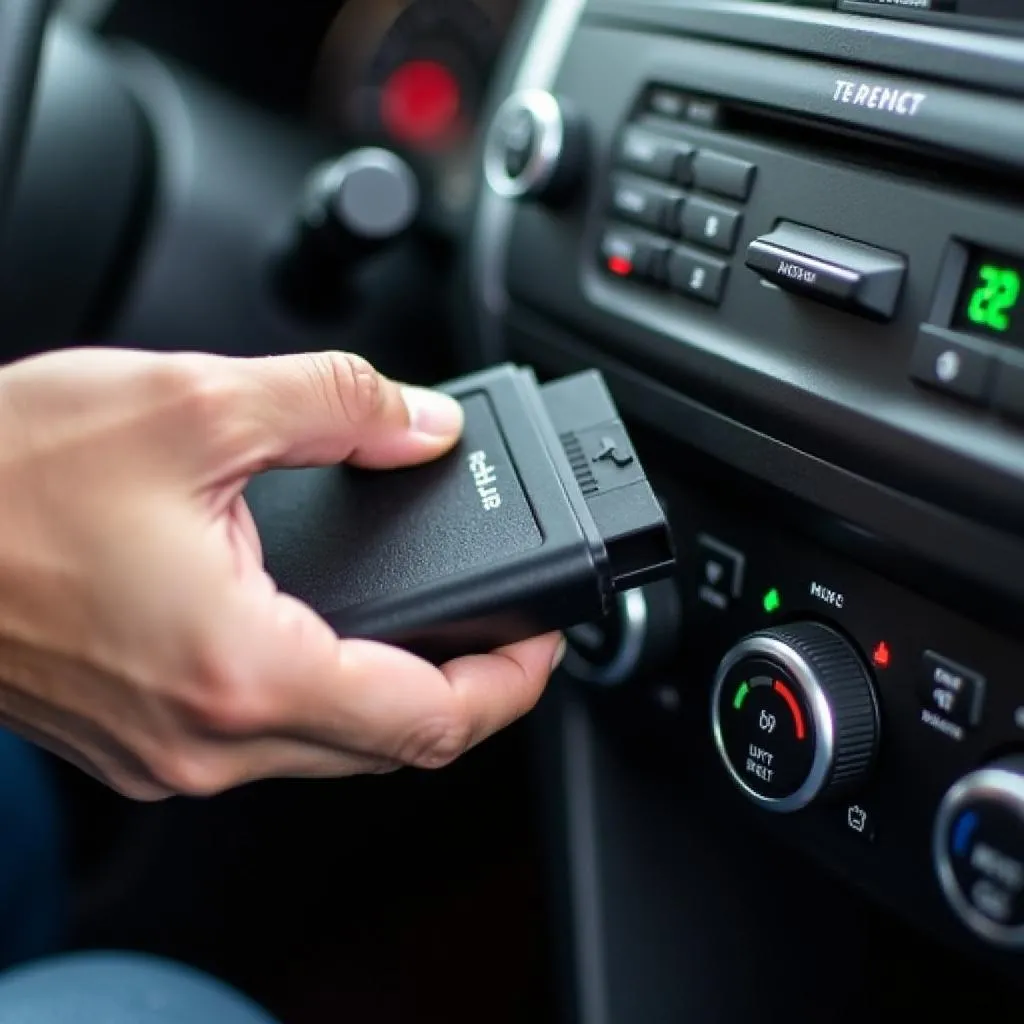The brake pad warning light on your 2006 BMW X3 is a crucial safety feature designed to alert you when your brake pads are nearing the end of their lifespan. Ignoring this warning can lead to reduced braking performance and potentially dangerous driving situations. This comprehensive guide will delve into the common causes of a brake pad warning light on a 2006 BMW X3, how to diagnose the issue, and the steps to rectify it.
Understanding Your BMW X3’s Brake Pad Warning System
The brake pad warning light operates on a simple yet effective principle. A sensor, known as a brake pad wear sensor, is embedded within the brake pad material. As the brake pad wears down over time, this sensor eventually comes into contact with the brake rotor. This contact completes an electrical circuit, triggering the brake pad warning light on your dashboard.
Common Causes of a Brake Pad Warning Light
While worn brake pads are the most common culprit behind a brake pad warning light, several other factors can contribute to this issue:
- Worn brake pad wear sensor: The sensor itself can wear out or become damaged, leading to a false warning light.
- Damaged brake pad wiring: A frayed or broken wire connecting the sensor to the vehicle’s electrical system can disrupt the signal, causing the light to illuminate.
- Faulty brake light switch: In some cases, a malfunctioning brake light switch can interfere with the brake pad warning system.
- Issues with the instrument cluster: While less common, a problem with the instrument cluster itself can cause various warning lights, including the brake pad warning light, to malfunction.
 BMW X3 Brake Pad Wear Sensor
BMW X3 Brake Pad Wear Sensor
Diagnosing the Problem
When your 2006 BMW X3’s brake pad warning light comes on, it’s crucial to diagnose the root cause before proceeding with any repairs. Here’s a step-by-step guide:
- Inspect the brake pads: The first step is to visually inspect your brake pads. Check for signs of excessive wear, such as thin pad material or grooves in the pad surface.
- Check the brake pad wear sensor: Examine the sensor for any signs of damage, such as cuts, fraying, or disconnections.
- Inspect the brake pad wiring: Carefully trace the wiring harness connected to the sensor, looking for any visible damage or loose connections.
- Consider other potential causes: If the brake pads, sensor, and wiring appear to be in good condition, it’s essential to consider other possibilities, such as a faulty brake light switch or issues with the instrument cluster.
 Diagnosing Brake Pad Warning Light
Diagnosing Brake Pad Warning Light
What to Do When Your Brake Pad Warning Light Turns On
If your inspection reveals worn brake pads, it’s crucial to have them replaced promptly. Continuing to drive with worn brake pads compromises your safety and can lead to more costly repairs in the long run.
Expert Insight from Mark Stevenson, ASE Certified Master Technician: “Never ignore a brake pad warning light. It’s always best to err on the side of caution and have your brakes inspected by a qualified technician.”
If you’re comfortable with automotive repair, you can replace the brake pads yourself. However, if you’re unsure about any aspect of the process, it’s always best to seek professional assistance.
For issues other than worn brake pads, such as a faulty sensor or damaged wiring, it’s highly recommended to consult a qualified mechanic specializing in BMW vehicles.
Preventing Future Brake Pad Warning Light Issues
While brake pad wear is a natural part of driving, you can take steps to prolong the life of your brake pads and minimize the likelihood of encountering brake pad warning light issues:
- Adopt smooth braking habits: Avoid harsh braking whenever possible. Gradual braking reduces the strain on your brake pads, extending their lifespan.
- Reduce unnecessary cargo weight: Excess weight in your vehicle puts additional stress on your brakes, leading to faster wear.
- Schedule regular brake inspections: It’s generally recommended to have your brakes inspected annually or every 12,000 miles, whichever comes first.
Conclusion
The brake pad warning light on your 2006 BMW X3 serves as a vital safety reminder. Understanding its function and addressing the underlying issue promptly ensures optimal braking performance and contributes to a safer driving experience.
By heeding the advice in this guide and prioritizing regular brake maintenance, you can confidently tackle any brake-related challenges that come your way.

